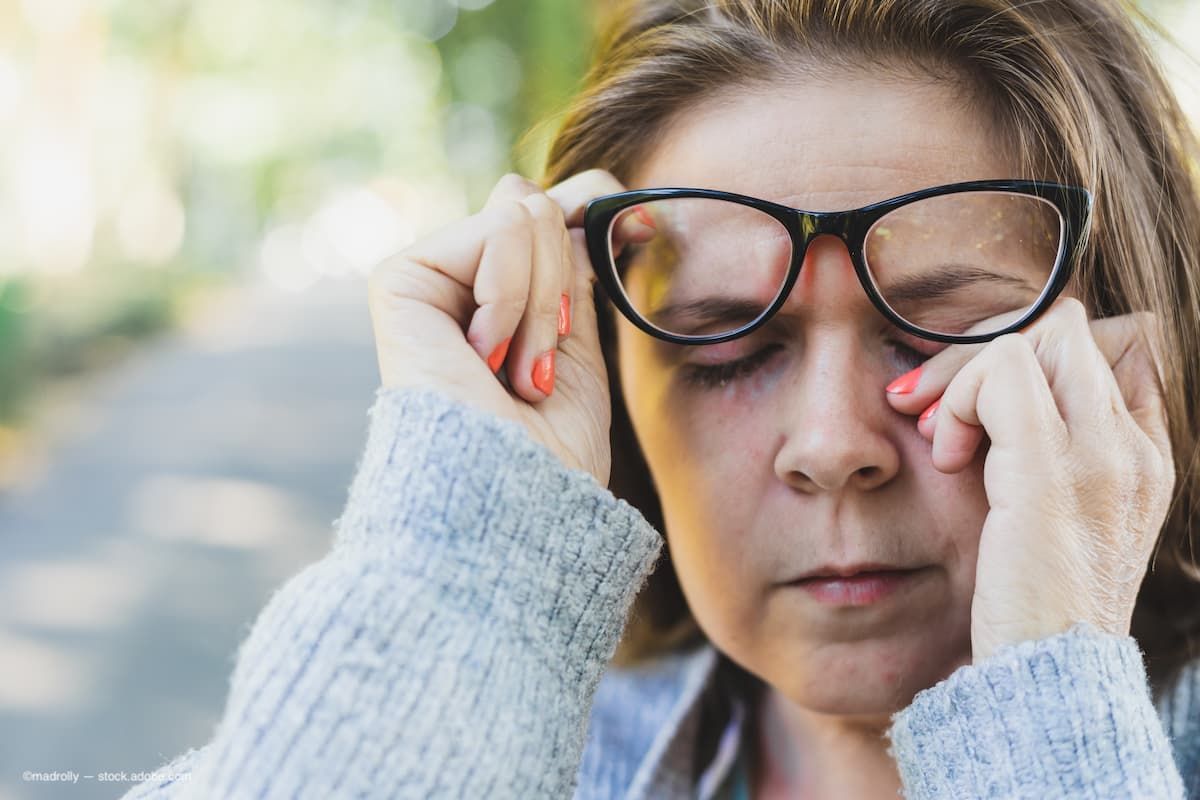Article
The eye rubbing cycle study: Warnings for patients with keratoconus and ocular surface disease
Author(s):
Eye rubbing is a common practice, but one that can cause a number of problems.
(Image Credit: AdobeStock/madrolly)

French investigators reported that chronic eye rubbing “presents addictive-like cognitive and behavioral characteristics in patients with keratoconus (KC) or ocular surface disease (OSD)” and may be instrumental in the onset and progression of KC and the maintenance of dry eye.1
Eye rubbing is a common practice, but one that can cause a number of problems.
The authors, led by Alexandre Hage, MD, from the Department of Ophthalmology III, National Hospital Centre for Ophthalmology Quinze-Vingts, IHU FOReSIGHT, Paris, explained that eye rubbing is a response to ocular pruritus or irritation. It also occurs spontaneously, particularly at bedtime or on awakening, during ocular fatigue or can even be psychogenic.2 The prevalence of eye rubbing in KC varies from 66% to 91%, and may cause the disease.3
Regarding OSD such as dry eye syndrome, the prevalence of ocular rubbing has been estimated to range from 20% to 30%.4 “Ocular rubbing constitutes a physical stress exerted on the eye and its appendages that induces numerous modifications: variations of the intraocular pressure, biomechanical, cellular and biochemical consequences, and occurrence of corneal ectasia.”5-7
The authors conducted a prospective non-interventional study in which a self-questionnaire was used to evaluate the ocular symptoms and medical background of patients with KC and OSD who engage in chronic eye rubbing. They used the Goodman and DSM-5 diagnostic criteria for addiction and CAGE-modified criteria for eye rubbing.
Eye-rubbing findings
A total of 153 patients were included in the study, of whom most, 81.7%, reported that they rubbed their eyes. The average Goodman score was 5.8 ± 3.1 and was 5 or higher in 63.2% of cases. The CAGE score was 2 or higher in 74.4% of patients. Addiction (P = 0.045) and the presence of a psychiatric family history (P = 0.03) were more frequent in patients with higher scores. Ocular symptoms and eye rubbing were significantly more frequent and intense in patients with higher scores, the investigators reported.
In commenting on their findings, the authors said, “Eye rubbing is a behavior with addictive-like cognitive–behavioral characteristics in patients with KC or OSD. Eye rubbing is part of a vicious cycle with peripheral and central sensitization. This cycle plays an essential role in the occurrence and progression of KC. Moreover, it could constitute an important element of maintenance and aggravation of dry eye disease, explaining the high prevalence of rubbing found in our OSD population.”
References:
Hage A, Knorei J, Leveziel L, et al. The Eye Rubbing Cycle Study. J Clin Med.2023;12:1529; https://doi.org/10.3390/jcm12041529
Hawkes E, Nanavaty M. Eye rubbing and keratoconus: a literature review. Int J Keratoconus Ectatic Corneal Dis. 2015;3:118–21.
Najmi H, Mobarki Y, Mania K, et al. The correlation between keratoconus and eye rubbing: a review. Int J Ophthalmol. 2019;12:1775–81.
Valdes-Rodriguez R, Rowe B, Lee HG, et al. Chronic pruritus in primary Sjögren’ssyndrome: characteristics and effect on quality of life. Acta Derm Venereol. 2017;97:385–6.
Greiner JV, Peace DG, Baird RS, Allansmith MR. Effects of eye rubbing on the conjunctiva as a model of ocular inflammation. Am J Ophthalmol. 1985;100:45–50.
Gatinel D. Challenging the “no rub, no cone” keratoconus conjecture. Int J Keratoconus Ectatic Corneal Dis. 2018;7:66–81.
Greiner JV, Leahy CD, Welter DA, et al. Histopathology of the ocular surface after eye rubbing. Cornea. 1997;16:327–32.
Newsletter
Don’t miss out—get Ophthalmology Times updates on the latest clinical advancements and expert interviews, straight to your inbox.





